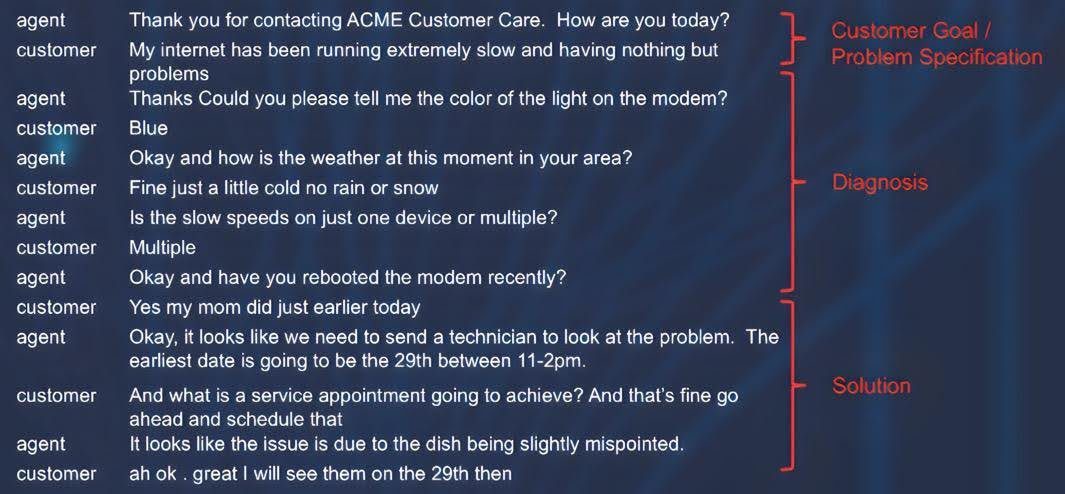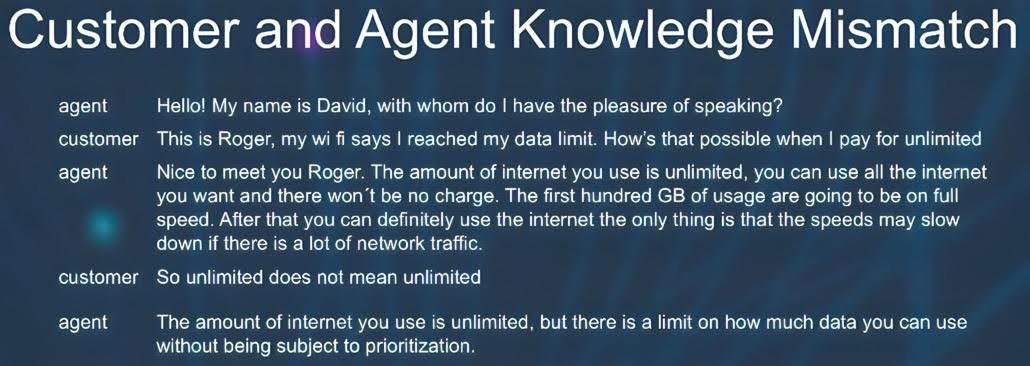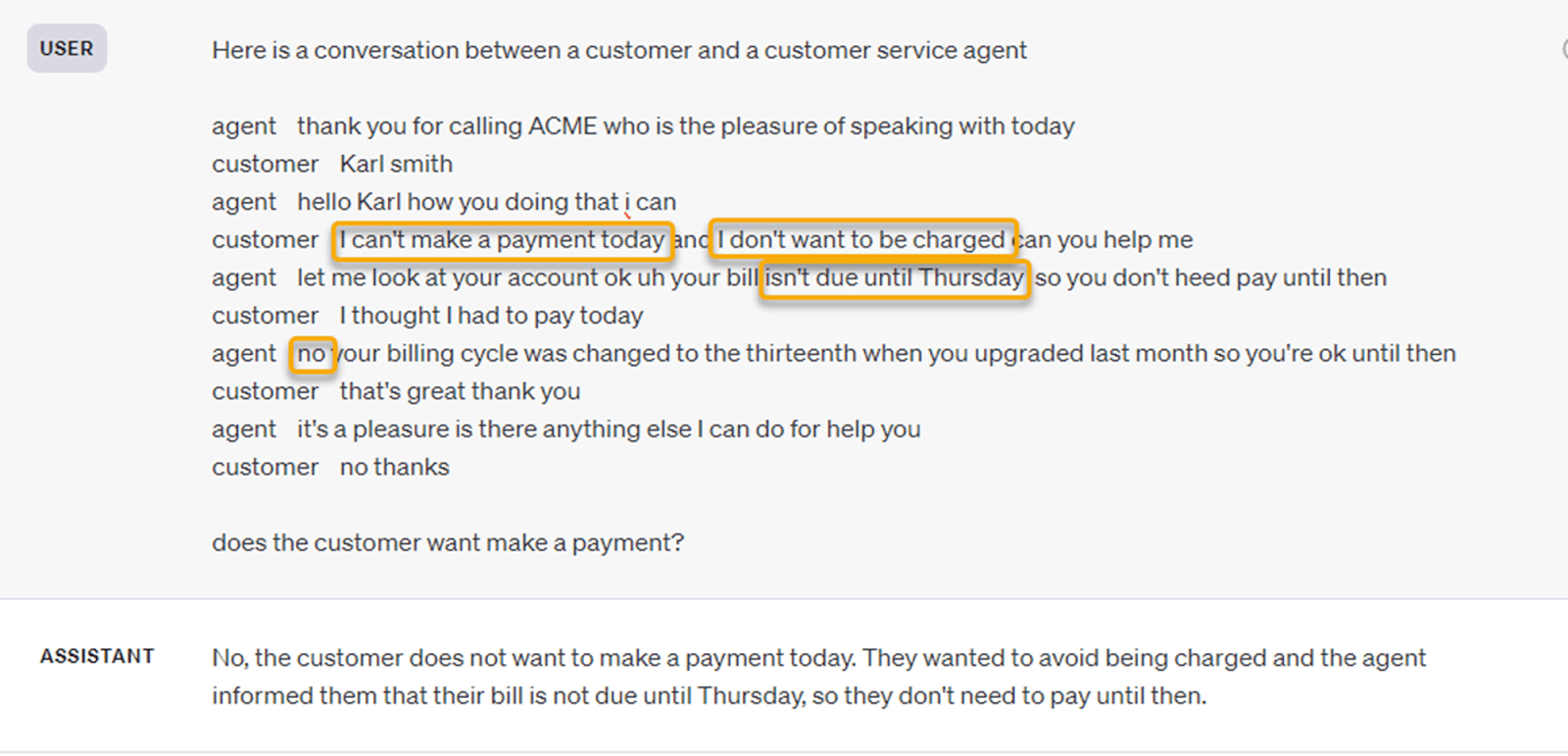By David Attwater, Senior Scientist, Talkmap
Conversational analytics is essential for businesses interested in how to dissect the nuances of customer conversations and interactions in order to improve the customer experience, reduce costs and improve profits. Interpreting the complexity of language, context, and intent is therefore vital to build trustworthy connections across a variety of situations—especially contact center conversations.
Consumer Contact Center interactions have a distinct style that is defined by asymmetrical but structured exchanges. Consumers attempt to interact with agents who have authority and experience to support them with their questions and issues. The three part structure of an asymmetric conversation starts with the customer goal/product specification, is followed by the diagnosis, and is completed with the solution.

There is a great deal of asymmetry when callers give up control in return for direction and assistance. Agents serve as both consultants and advocates, using their resources and expertise to meet the goals of customers.
As customer representatives negotiate the complexities of client requests, complaints, and queries, trust, empathy, and expertise should be essential components of good communication.
Unfortunately, this ideal level of service is not always the outcome, leading organizations to try to analyze the conversations to learn how to make the interactions more effective.

Organizations encounter substantial obstacles when evaluating contact center discussions. Word spotting often fails to capture the context and depth of language. When analyzing real transcribed conversations there are many common features that are overlooked by keyword detection, which often leads to distorted interpretations. These overlooked features include things like transcription errors, negation, sarcasm, spontaneous correction of speech. The sequence of events in a conversation is also very important. In addition to understanding individual conversations, effective analytics requires automated methods to group closely related meanings so that categories can be counted. The sheer volume and variety of conversational data poses significant challenges, making it impossible to analyze manually.
Large Language Models (LLMs), provide a revolutionary approach to conversational analytics, and stand out as an indicator of hope despite these obstacles. By utilizing extensive datasets and advanced algorithms, LLMs are able to interpret language and context with greater accuracy and efficacy. LLMs let businesses obtain a more profound understanding of the requirements, preferences, and actions of their customers, improving scalability, and uncovering hidden patterns in conversational data.

For example, in the conversation above the agent and the customer use a number of negations such as ‘I can’t make a payment today’. This is very common in contact center conversations. Traditional word-spotting technologies don’t handle negation very well and are very likely to classify that as ‘make a payment today’. You can see however that the LLM Assistant correctly interpreted the sense of the conversation.
Fully understanding the need for LLMs vs. traditional call center capabilities requires a deeper dive into the benefits, drawbacks, and revolutionary role of LLMs and the complex field of conversational analytics. To do that, we first need to examine the fundamental conceptual framework of the how’s, what’s, where’s, and when’s of conversation.
For example, many different elements, including shared understanding, nonverbal cues, general goals, and even natural interactions are all part of the cycle that people use to convey their thoughts. Personal preferences and reactions to societal standards are also fundamental components of conversation. Language, context, and intent are the three most valuable elements used in facilitating understanding in order to find a solution. Each statement has multiple levels of meaning that are determined by social dynamics, situational cues, and prior experiences.
Using LLMs, organizations can find a range of insights in their varied conversational data. Several techniques, like topic modeling and qualitative analysis are made simple by LLMs to gather useful data from client interactions. Employing machine learning and natural language processing (NLP), companies can more accurately detect trends and problems, thus enhancing customer outreach strategies.
Businesses can grow to be privy to obstacles in their pursuit of long-term growth, advanced customer studies, and expanded operational performance through using large language models and data-driven insights. With LLMs guiding organizations towards deeper connections, longer-lasting relationships, and more significant interactions, their necessity for business success will only continue to intensify.
Coming Up Next:
Next in the series, we’ll be talking about how intelligent chatbots and IVRs will change your call centre. Also on the horizon:
- What really makes a good summary and is Generative AI up to the task?
- Just how risky is Generative AI?
David Attwater
Senior Scientist
Talkmap
LinkedIn